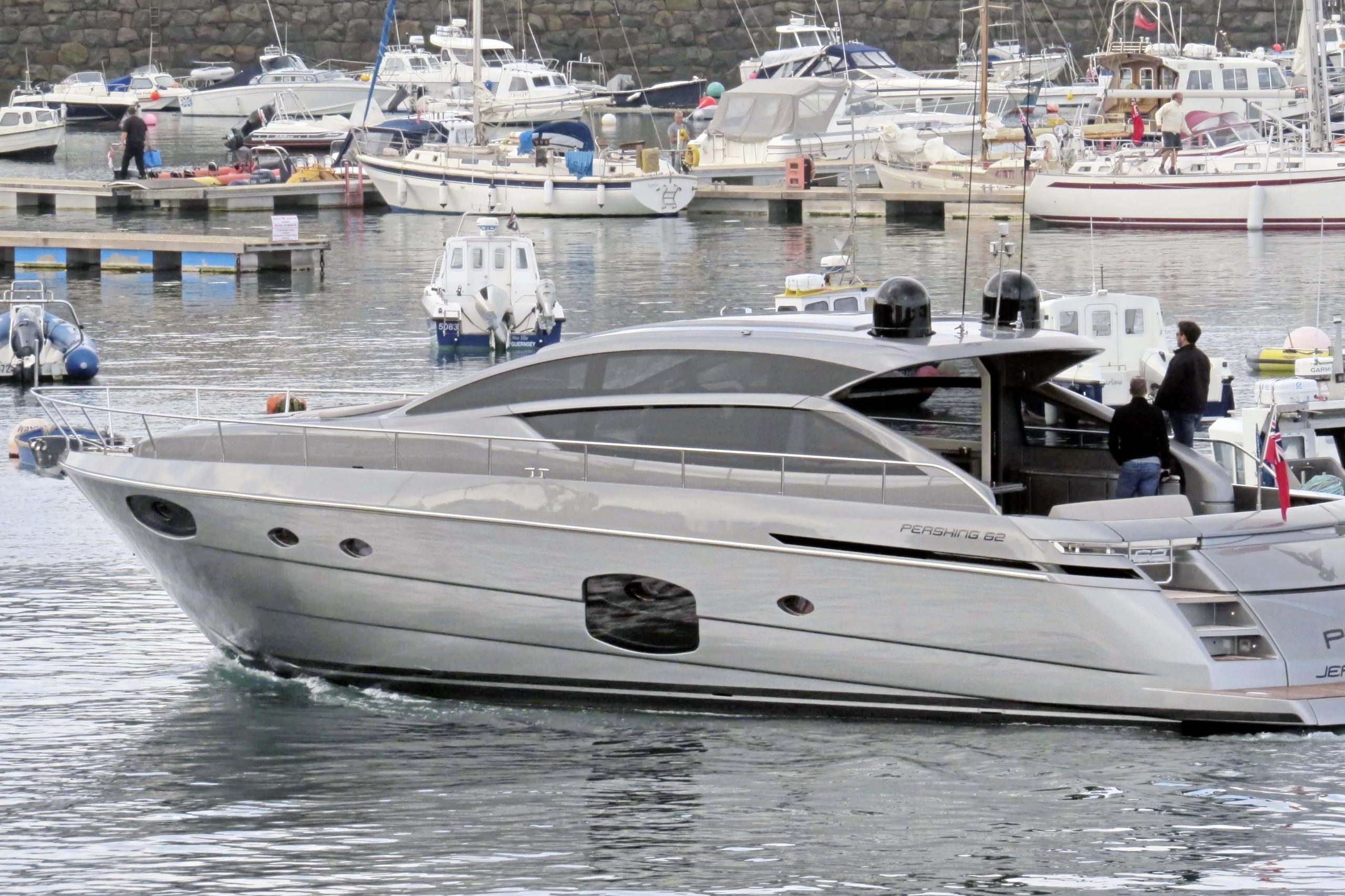Specialist equipment would need to be brought to the Island to recover the 45-tonne vessel which is at least 16 metres below the surface at low tide about a kilometre out from the centre of St Brelade’s Bay.
Harbourmaster Bill Sadler said his team were working with the boat owner’s insurers ‘to come up with the best plan’.
‘Whether that is recovery or looking at a way to stabilise it where it is we shall see,’ he said. ‘We are carrying out an investigation into the accident and a mandatory report has been made to the maritime administration.’
He added that there was currently no evidence that fuel from the 3,200 litre tank, which was not full at the time the vessel went under, had leaked into the sea.
The £1.8 million, six-berth yacht, called P6T2, sank on Friday night after colliding with the green Ruaudière Buoy at about 26 knots (30 mph) in the centre of St Aubin’s bay at about 5.45 pm on Friday. It had been heading out of the Bay towards St Peter Port in Guernsey.
The JEP has seen CCTV footage of the yacht travelling towards the buoy which was brightly lit at the time of the accident. The collision destroyed the top section of the buoy and Mr Sadler said the whole unit will have to be replaced.
By the time the Fire and Rescue Service arrived on scene with their inshore rescue boat, the vessel was all but completely submerged with only a small section of its bow sticking out of the water. The two crew were recovered from a life raft.
Mr Sadler said speculation on social media that suggested the St Helier Lifeboat Station’s all-weather vessel the George Sullivan could have saved the yacht using salvage pumps had it been available were incorrect because the boat was too far under.
The George Sullivan was taken to Poole hours before the accident, after the RNLI shut the St Helier station and disbanded the crew following a long-running dispute.
‘Of course the St Helier crew would have responded had they been there but they are not. The Fire and Rescue Service were on scene within 20 minutes and by then it was too far gone,’ Mr Sadler said.
‘Suggestions that the Duke of Normandy could be used to pull the vessel out is also not correct. It would need specialist equipment not available in the Island.’
The Duke of Normandy is currently on a planned commercial operation in the Caledonian Canal in Scotland. The MTS Vulcan 2 tug has been drafted in temporarily because of forecast windy weather.
Mr Sadler said while the buoy, which should still be picked up by radar, remains out of action a navigation warning to mariners is in place and boats travelling in and out of St Helier are being advised to stay vigilant.
‘The Ruaudière Buoy is a category three buoy that we have to ensure is operational 97 per cent of the time. So that gives us an eleven-day window from the point of the accident to replace the buoy. We have a spare – what we call a dirty buoy or one that is used – that we hope to get out once the Duke of Normandy returns next week.’






